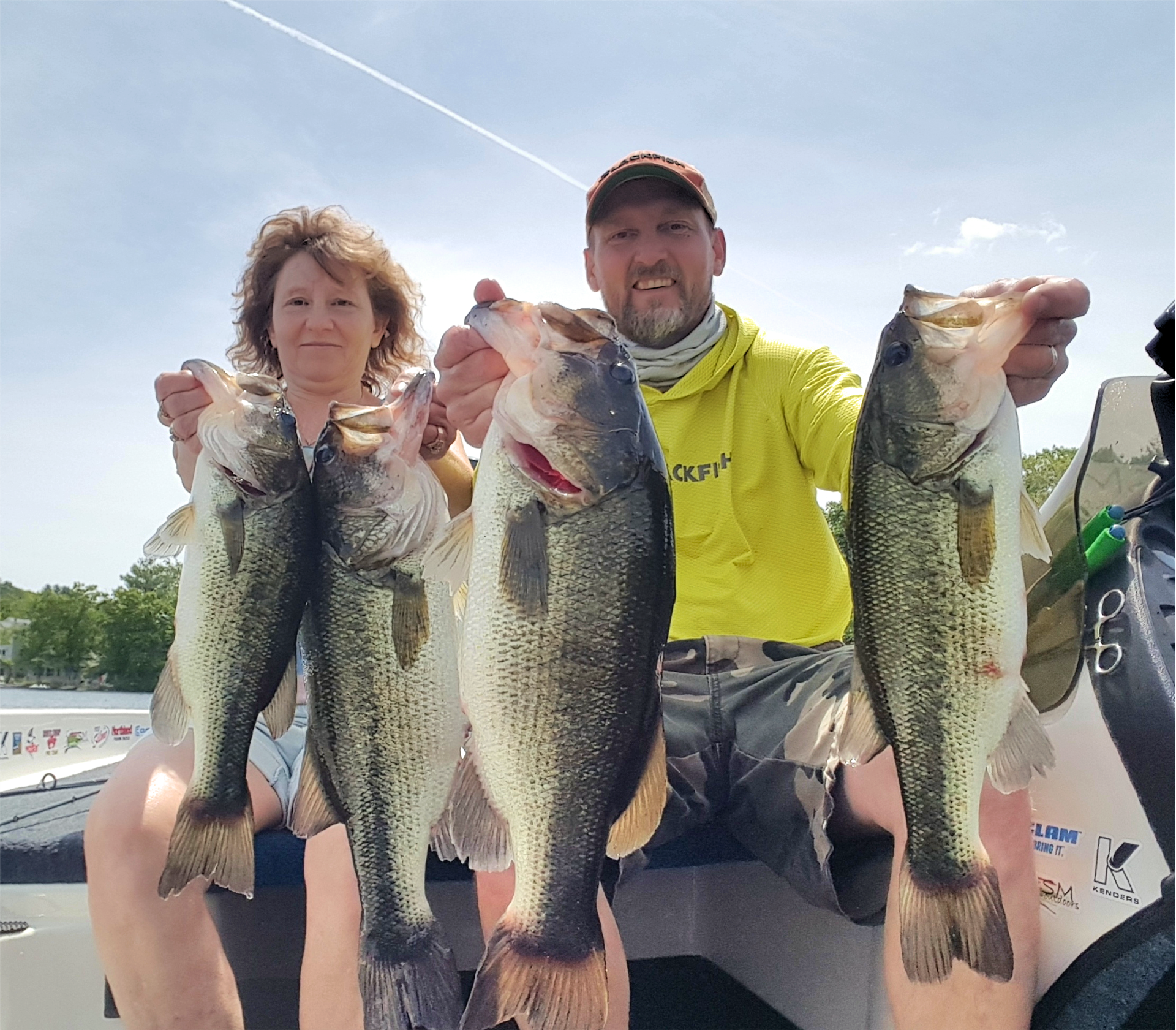
Summertime means that the fish are using the weeds and fishing in the weeds becomes more of the norm than not. Many anglers will shy away from fishing directly in the weeds for fear of getting tangled up or losing their baits.
Getting over those fears will put more fish onto your line, and in turn, that makes for a more enjoyable day on the water. Many times, fish hang on the outer edges of the weeds and wait for their prey to come by and these fish then ambush their meals.
The jig worm consists of a jig, weight is determined by the depth that is being fished, and plastic bait, we have been using the Northland Impulse Nightcrawler. Typically use a 1/8oz jig but if there is a good amount of wind, a 1/4oz will be needed for feeling the jig.
Having the boat positioned correctly aids in having better chances of catching these fish. Typically, the boat is set up so that you can make your cast of the bait, out past the weedline edge. Retrieving the jig worm slowly back towards that weed edge and working it through the weeds back to the boat.
Usually having the jig with an exposed hook, you will get some weeds onto the jig and at that point, retrieve it back and clean it off. But there are clear pockets in the weeds and when the jig is worked back through one of these areas, the fish use these as ambush locations.
Also, having the exposed hook, hook up ratio is increased as you don’t have to drive the hook point through the plastic making the bites much more productive. It does get annoying collecting weeds on the hook, but as you fish this more, you will start to get the feeling as to how the bait feels coming through the weeds.
Finding underwater humps and fishing this way, can give up some nicer fish as these fish may not have seen a bait that often. Prey uses the weedlines as much as the predator fish do, by fishing outside the weeds and coming into them, this makes your presentation look very natural as prey doesn’t like being out in the open water and being vulnerable.
Kevin Dahlke

